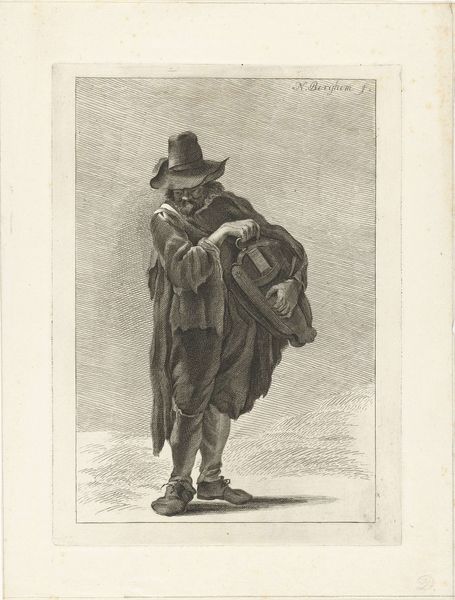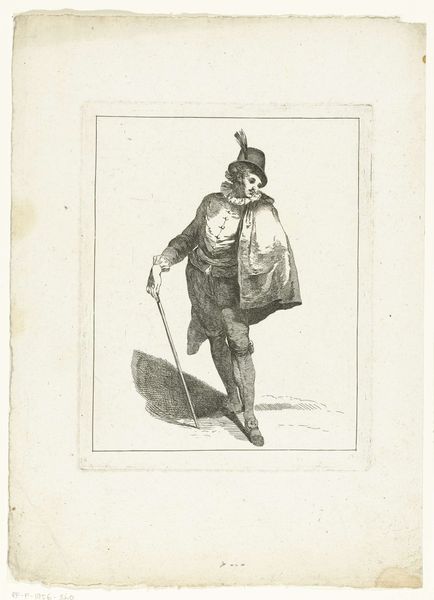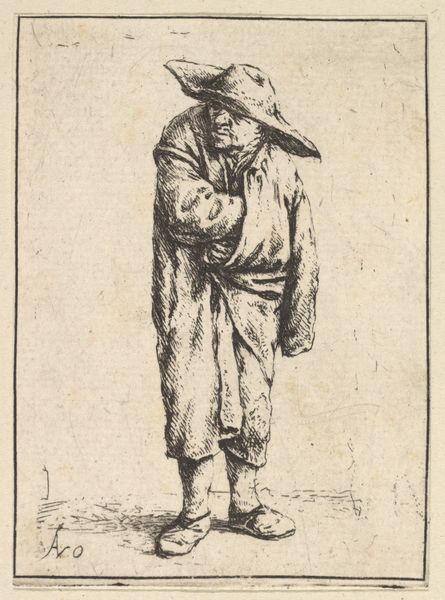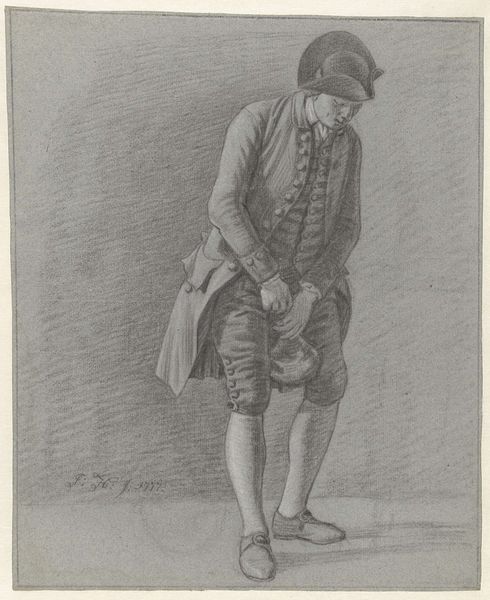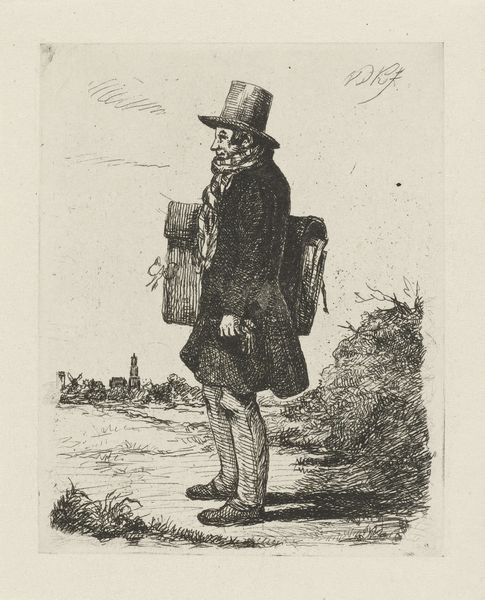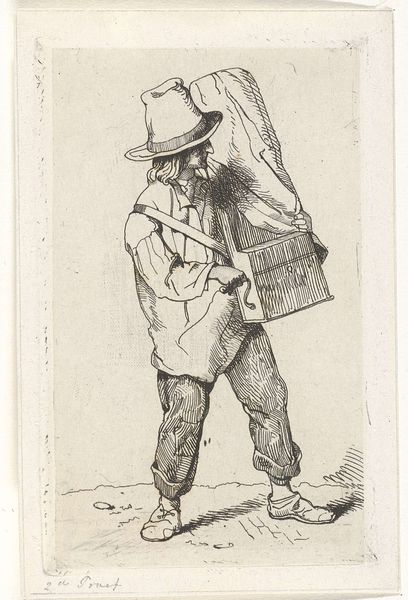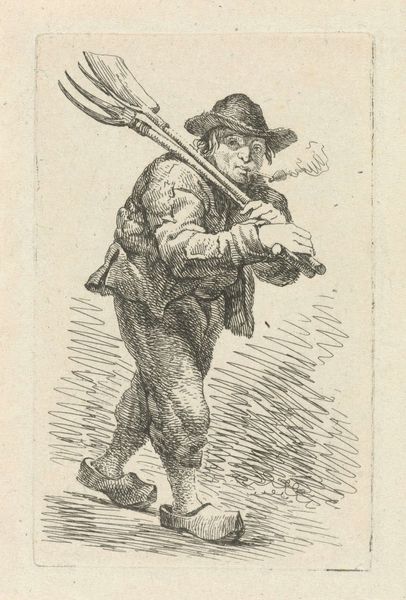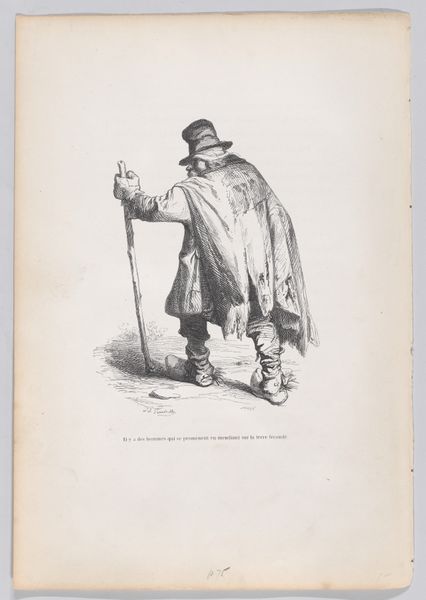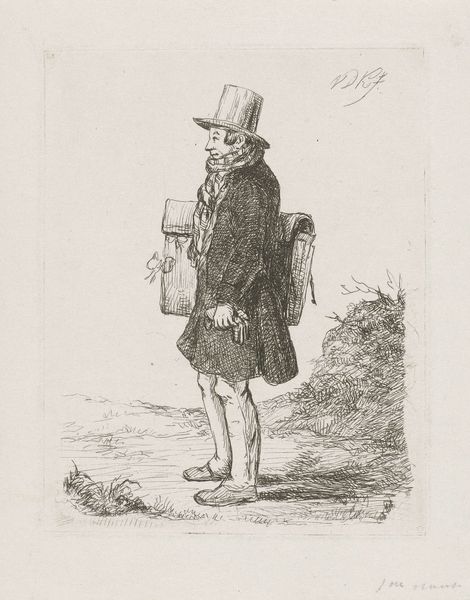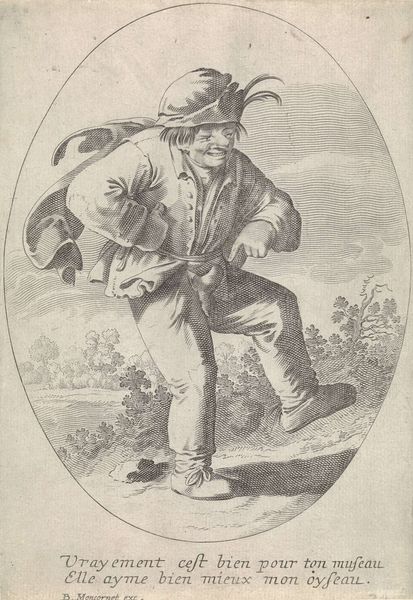
Dimensions: height 280 mm, width 204 mm
Copyright: Rijks Museum: Open Domain
Pieter de Mare created this print of a hurdy-gurdy player using etching, sometime before 1796. The figure of the itinerant musician in the Netherlands was a common trope in art, representing not just a source of entertainment but a social class. This image creates meaning through the visual code of dress, a tattered cloak and hat suggesting his humble status. The hurdy-gurdy itself, an instrument played by turning a crank, marks him as someone who must work to make music. The Netherlands in the late 18th century was a society with strict social hierarchies and economic inequalities. Artists were often supported by wealthy patrons, so the image could reflect a self-conscious awareness of the artist’s own position within that structure. Art historians can research the social history of the Netherlands through census records, newspapers, and other documents to shed light on the world that shaped de Mare's work. Ultimately, understanding the social and institutional context allows us to appreciate the depth and complexity of this image.
Comments
No comments
Be the first to comment and join the conversation on the ultimate creative platform.
